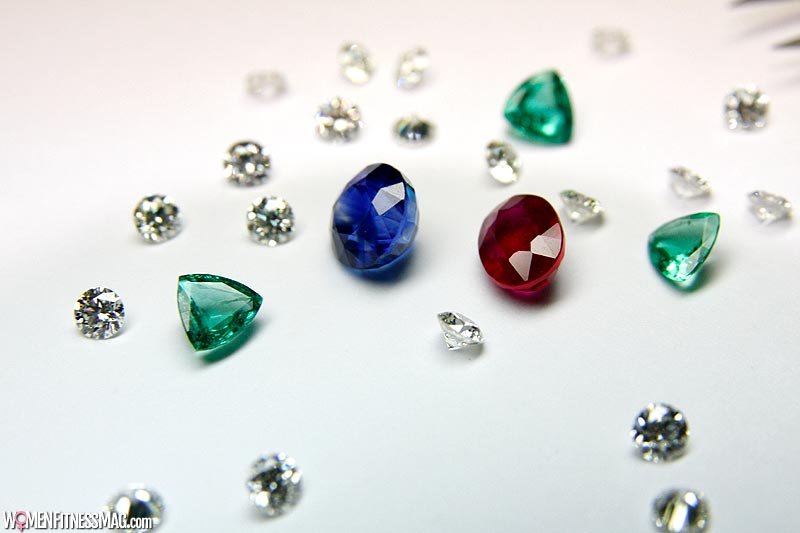A Look at Lab Diamond Manufacturing : Diamonds are a near-everlasting piece of our world. They have been waiting under the earth for us to discover for millions of years and will outlast the final beings to walk the land many millions of years into the future. Diamond manufacturing has become a significant player in the world of diamond jewelry and other uses for the stones that get our hearts pumping.
A real diamond can come in many shapes and sizes, and unlike cubic zirconia, it has a unique and difficult-to-replicate organic structure. Scientists have produced commercially available synthetic diamonds that feature the same compounds for many years and have perfected the craft in our modern world. Diamond manufacturing is big business, especially when you consider all the other uses that diamonds play in our daily lives beyond their universal center stage position in the engagement ring industry.
Lily Arkwright are a UK based jeweler that offer a huge selection of IGI, GIA and Diamond Foundry certified lab diamond rings, alongside their moissanite engagement rings. They set their own brand Lily Arkwright Moissanite or the popular Charles & Colvard moissanite in every ring style, as well as offering free global shipping. We would recommend our readers visit their website and view their amazing collections.
Diamonds in the workplace
The diamond is our Earth’s hardest naturally occurring material. Scratches and dings are nearly impossible to create on the face of a diamond, and because of this, diamond materials are a mainstay in the industrial manufacturing and construction industries. Indeed, over 70% of diamonds in circulation for human use are allocated to industrial applications and job sites for their cutting power and incredible hardness attributes.
Because of its demand in the industrial space, an alternative to earth-mined diamonds is necessary to keep up with demand and maintain a cost-effective model. Natural diamond alternatives are essential to the workplace and are becoming more popular in jewelry applications as well.
In everything from plastics molding manufacturing to heavy metals cutting applications, diamond solutions are crucial to industrial efficiency and rapid improvements that spell success down the road. As well, plastic is another material that will long outlive us. Plastic is a synthetic material that holds up incredibly well to the elements and human and mechanical stressors, making it an ideal substance for packaging, parts, and containers. However, the need to recycle plastics makes for a significant shift in how plastic part fabrication is undertaken.
Plastic parts are now relying on recycled pieces for much of the creation process to facilitate a more responsible, environmental outreach – much like the shift toward a reliance on mined-diamond alternatives such as synthetic diamonds and moissanite, another often lab-created stone that is prized for its beauty, durability, and hardness in engagement rings and other jewelry as well as industrial applications.
Synthetic Diamonds vs. Natural Diamonds in Jewelry
Lab-created diamonds are making headway in the jewelry industry. Manufacturers of diamond jewelry have been waging a public relations campaign against mined diamond alternatives for many years, but the consumer base is beginning to fracture.
Natural diamonds are thought of as those that come from the ground, but the truth is that a lab-created diamond is purely a diamond as one found beneath the Earth’s surface. Unlike cubic zirconia or moissanite (another natural and lab-grown gemstone alternative that far outstrips cubic zirconia), these stones are fabricated with the same crystalline structure using high temperature and high-pressure systems, just like natural diamonds found in the ground. The only difference, of course, is that these are not forged over millions of years of high pressure and temperature compacting. Instead, scientists can replicate these terrestrial conditions to create real diamonds in a fraction of the time required to form mined ones. These diamonds sell for a fraction of the price as well.
They are true stones and can be forged with minor imperfections and exacting standards, giving wearers and buyers a significant amount of control over the product they add to their jewelry collection. Lab-created diamonds are here to stay and for a good reason. They offer the same high quality as a mined diamond at a fraction of their siblings’ cost and energy from the dirt.
Related Videos about A Look at Lab Diamond Manufacturing :
How Its Made – 593 Cultured Diamonds
https://www.youtube.com/watch?v=8XTJXSmPtRg
Synthetic Diamonds
https://www.youtube.com/watch?v=zmE85bJjgPs
These lab-grown diamonds are identical to natural ones
What is Lab-Grown Diamond | CVD Diamond | Synthetic diamond | Moissanite | Fake Diamond |DU-GEMOLOGY
A Look at Lab Diamond Manufacturing
lab grown diamond companies, how to make synthetic diamonds, synthetic diamond price, best lab grown diamonds, lab diamonds vs real diamonds, cvd diamonds for sale, gia certified lab created diamonds, de beers lab-grown diamonds,




